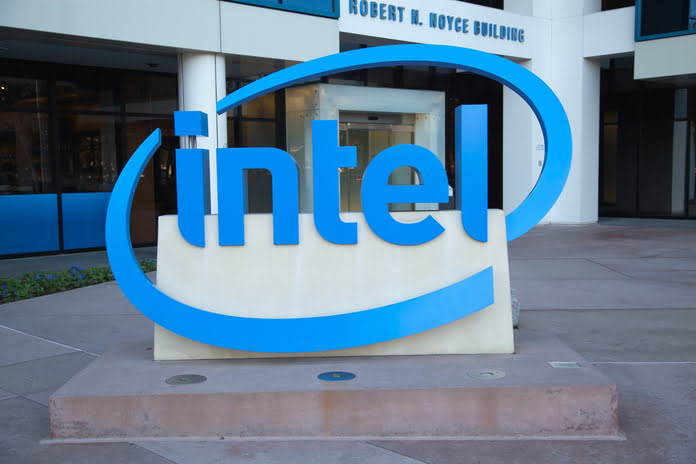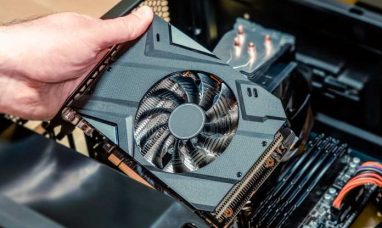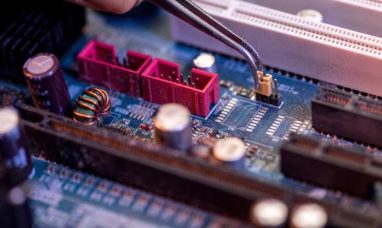Following weak earnings, the market has punished Intel Corporation (NASDAQ:INTC). While some see this as a negative, I believe the corporation will benefit greatly from investing in foundries. The CHIPS Act and the imminent Taiwan dispute will catalyze the company’s stock to rise again.
What’s Going On With Intel
Intel has been performing poorly in recent months and has given substantially lower returns than competitors such as Advanced Micro Devices (AMD) and NVIDIA Corporation (NVDA).
The company’s stock is trading at the same price as in 2016, while its competitors have risen dramatically. Because AMD and NVIDIA are growth stocks, one could claim that they are fueled by easy monetary policy. However, Intel has suffered just as much since the market crested and the Fed began tightening. Investors have been turned off because it has a more reasonable value, proves profitability, and even pays a dividend.
The poor Q2 figures released at the end of July were the final nail in Intel’s coffin. Revenues fell 19% year on year, and non-GAAP EPS came in at $0.29, considerably below the $0.7 analyst consensus.
Revenues for the “Client Computing Group” and the “Data Center and AI Group” fell by double, putting a further dent in operating income. Smaller output means higher unit costs, which can be compounded by supply chain issues, higher input costs, and decreased customer inventory demand. While the “Network and Edge Group” sales increased by 11%, the operating margin shrank from 29% to 10%. Intel is undeniably hurting, and the current stock price reflects this. However, Intel can turn things around with the right circumstances and investment.
Why Now Is The Time To Buy
While Intel lags in technological design, the corporation is changing to become a chip foundry. This decision has been criticized in the past. Still, this time may be different due to the convergence of several triggers.
First and foremost, President Biden is signing the CHIPS and Science Act as I write this. This law will direct $52 billion toward semiconductor investments. It also contains billions of dollars in tax breaks to encourage investment in semiconductor infrastructure.
Of course, this is fantastic news for Intel. Bank of America (BAC) analysts believe Intel will benefit the most from this transaction. The corporation might receive $10-15 billion in funding. Furthermore, Intel is profiting from similar rules in the EU, where the business has announced a $88 billion investment plan. One example is the $5 billion facility that Intel proposes establishing in Italy.
But my argument is that this is just the beginning. One of the reasons for the CHIPS law is to lessen reliance on Taiwan. Following recent events, it is evident that the country is in a complicated situation, with tensions on the rise. Following Pelosi’s visit, China upped its military drills, and tensions are worse than ever. The indications are all there, but the market is taking its time processing the news, as it always does.
The situation is similar to what occurred in Ukraine. Following the “Orange Revolution,” which pitted pro-Europeans against pro-Russians, pro-Russian Prime Minister Viktor Yanukovych was deposed in 2004. This was far from a surprise conflict.
The West will be forced to expand its chip manufacturing capabilities at that time, and investment in the industry will undoubtedly increase rapidly. Intel is well positioned to fulfill the prospective needs of the West. While it still needs to build infrastructure and develop its technology, it is making the correct moves.
Valuation
Analysts have noticed a definite trend developing due to Intel’s heavy investment in foundries. As we can see, analysts estimate EPS to fall until 2023, then gradually rise. Revenues, on the other hand, should begin to rise dramatically from 2023, with a potential $80 billion anticipated for December 2024.
The beautiful thing about investing in Intel right now is that it allows investors to obtain exposure to a company with growth potential that is entering a fast-growing sector while simultaneously owning one of the world’s largest companies, with a proven track record of profitability and a dividend.
When compared to competitors, Intel is undervalued. At this pricing, Intel’s projected P/S by 2024 would be 1.94. If we use the sector median P/S of 3.17, this will imply a 63% upside potential.
Risks
While I am optimistic about Intel’s strategy, several possible hazards exist. BofA Analyst Vivek Arya raises one issue: Intel’s integrated design hinders participation from rivals such as AMD and NVIDIA. In other words, these businesses will not want to rely on Intel. This, I believe, is why Intel is concentrating its efforts on Europe.
Furthermore, Intel is technologically deficient. It, for example, cannot construct 40nm nodes, which are essential for auto parts. Furthermore, Intel must compete with other established foundries in the West that have a head start on Intel, such as GLOBALFOUNDRIES (GFS). However, given Intel’s scale and some assistance from its supportive government, Intel may be able to secure a place in this market.
Takeaway
Intel is a battered stock with a difficult path ahead, but for investors with foresight, this could be an opportunity to get in on the first floor of something major. Furthermore, Intel’s existing lucrative operation provides investors with a significant margin of safety.
Featured Image: Megapixl @Dragan56

















